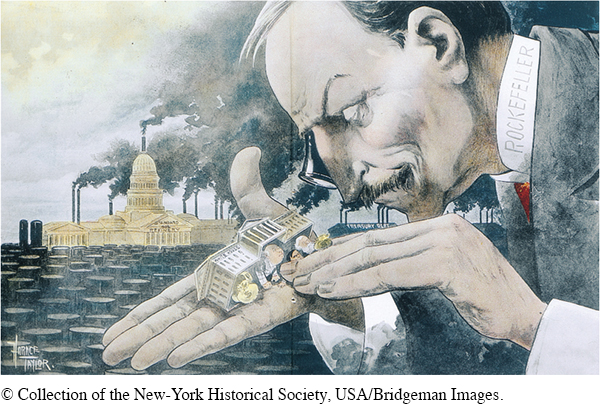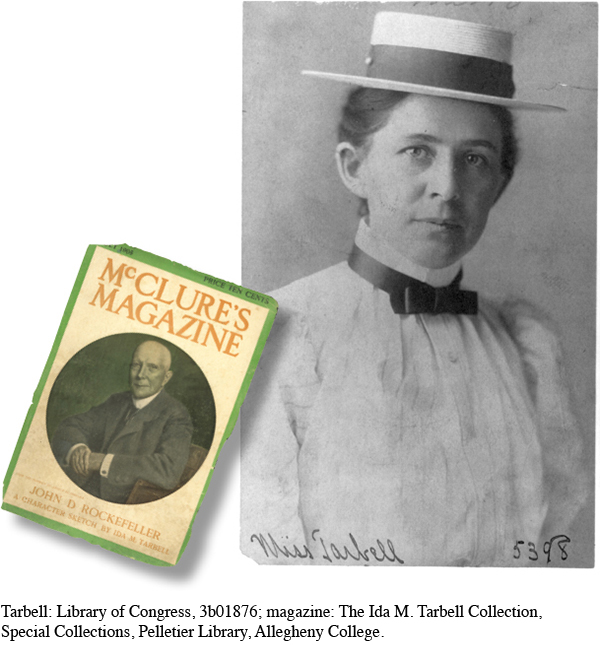The American Promise: Printed Page 505
The American Promise, Value Edition: Printed Page 463
The American Promise: A Concise History: Printed Page 525
John D. Rockefeller, Standard Oil, and the Trust
The American Promise: Printed Page 505
The American Promise, Value Edition: Printed Page 463
The American Promise: A Concise History: Printed Page 525
Page 505In the days before the automobile and gasoline, crude oil was refined into lubricating oil for machinery and kerosene for lamps, the major source of lighting in the nineteenth century. The amount of capital needed to buy or build an oil refinery in the 1860s and 1870s remained relatively low—
Rockefeller grew up the son of a shrewd Yankee who peddled quack cures for cancer. Under his father’s rough tutelage, Rockefeller learned how to drive a hard bargain. In 1865, at the age of twenty-
As the largest refiner in Cleveland, Rockefeller demanded illegal rebates from the railroads in exchange for his steady business. The secret rebates enabled Rockefeller to drive out his competitors through predatory pricing. The railroads needed Rockefeller’s business so badly that they gave him a share of the rates that his competitors paid. A Pennsylvania Railroad official later confessed that Rockefeller extracted such huge rebates that the railroad, which could not risk losing his business, sometimes ended up paying him to transport Standard’s oil. Rebates enabled Rockefeller to undercut his competitors and pressure competing refiners to sell out or face ruin.
To gain legal standing for Standard Oil’s secret deals, Rockefeller in 1882 pioneered a new form of corporate structure—


When the federal government responded to public pressure to outlaw the trust in 1890, Standard Oil changed tactics and reorganized as a holding company. Instead of stockholders in competing companies acting through trustees to set prices and determine territories, the holding company simply brought competing companies under one central administration. Now one business, not an assortment of individual refineries, Standard Oil controlled competition without violating antitrust laws that forbade competing companies from forming “combinations in restraint of trade.” By the 1890s, Standard Oil ruled more than 90 percent of the oil business, employed 100,000 people, and was the biggest, richest, most feared, and most admired business organization in the world.
John D. Rockefeller enjoyed enormous success in business, but he was not well liked by the public. Editor and journalist Ida M. Tarbell’s “History of the Standard Oil Company,” which ran in serial form in McClure’s Magazine (1902–